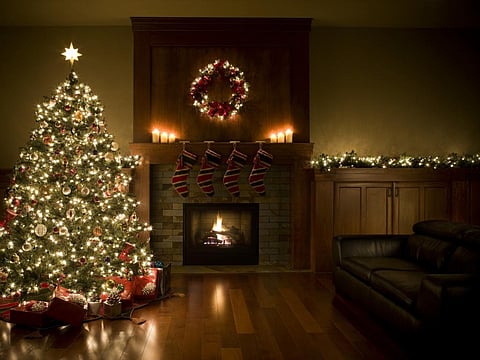

Recurring challenges in procuring a traditional Christmas tree due to a continuing supply shortage can be attributed in part to climate change, according to a recent University of British Columbia report.
The strain on supply has been building steadily over the past few years due to buyers’ increased interest in having real trees, recovery from COVID-19 pandemic-induced shipping problems and fewer local farmers growing trees and climate change, according to the report.
Climate change continues to plague the real Christmas tree market, UBC faculty of forestry professor Richard Hamelin said in the report. Several factors must be considered to improve the growing supply chain shortage worldwide.
Christmas trees are grown primarily on plantations or on farms. It is more similar to an agriculture operation than a forestry operation, Hamelin explained. The trees can also be grown naturally in the forest, but this is a very small proportion of the trees sold and is not sustainable.
There has been a reduction in the number of farms since 2008, so fewer trees are being produced, said Hamelin. The pandemic created a big demand because most people stayed home and wanted to have Christmas trees in their houses. Droughts and floods are also contributing to the shortage, he said.
Hamelin said:
Climate change causes challenges like extreme weather events, including flooding, heatwaves and wildfires. What really hurts Christmas tree production is when you have consecutive droughts, as we have had the last two years, combined with freak weather events like the heat dome.
Consecutive droughts and freak weather events are particularly hard on the small trees and the seedlings.
Pests and diseases have also been a big problem and they can be favoured by climate change, the professor said. Trees that are weakened by stress due to heat and flood are more susceptible to diseases.
Canada produces between three million and six million Christmas trees annually. A large number of those trees are exported, he said, adding that the demand was too high.
Douglas fir, Noble fir and Grand fir are the most sought-after, along with pines and spruce. Balsam fir tends to be the most popular in North America. It has nice qualities like soft needles and a pleasant scent and it can also retain its needles longer, according to Hamelin.
Growers need to delay harvesting until new needles are produced for conifers that didn’t die from the heat dome and the drought, the professor said. They can also plant new seedlings, hoping that there won’t be droughts in the next couple of years.
Genome sequencing might also present solutions that are more adapted to these harsh conditions and to diseases, he said. For example, scientists can build roadmaps for identifying desirable traits such as drought and pest resilience.
Selecting non-native trees like Turkey fir and Nordmann fir is also an option.